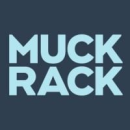What does it mean to be “future-ready?”
As companies navigate turbulent market headwinds and plan for a post-pandemic world, this question is top of mind for many business leaders. Some have adopted new technologies, while others have sought feedback from stakeholders, built key partnerships, or doubled-down on their mission statements.
Regardless of their approach, one thing is certain: No one knows what the future will bring, but that shouldn’t stop companies from being prepared. We spoke with 12 business leaders to share how they have transformed their businesses for the future, and the lessons they’ve learned that help them control the controllables and focus on the coming year ahead.
Abalta enhances mobility across the globe by providing expert software solutions.
What is a key strategy, product, or plan you’ve put in place to transform your business, and why?
At Abalta, we made a clear decision to focus a significant portion of our effort toward continuing to evolve the in-vehicle experience by providing our WebLink product to the market. As with any new product to the market, we faced extremely difficult challenges. Thanks to the passion, persistence, and willpower of our team and customers, we’ve been able to continue to provide an amazing driving experience by allowing drivers to connect their smartphones to the in-vehicle screens equipped with WebLink.
How is that strategy paying off for you now?
As of 2023, we have successfully installed WebLink in over 5 million vehicles all across the world. Thanks to the dedication of the Abalta team, we have created strong partnerships with key players in the vehicle industry and have gotten even closer to our customers who use WebLink in their vehicles. It’s truly a blessing to have the opportunity to hear the voice of our customers on a daily basis and continue to improve and deliver to them solutions that make their lives better. This has led to further innovation and development of WebLink, as well as new product ideas from our R&D department.
What’s the most important lesson you’ve learned recently, and how do you hope to apply it to your business moving forward?
Recently, I learned the importance of creating a culture that enables each team member to achieve their individual and organizational objectives. At Abalta we have four very simple, but extremely important principles that guide our corporate culture. We strive to be “agile,” to “challenge” ourselves and each other, to take “passion” in our work, and to keep a “team spirit.” Moving forward, these are the qualities and principles that we want to apply to our day-to-day work at Abalta to promote personal and professional growth.
AWeber has helped over a million entrepreneurs and small business owners connect with their prospects and customers through email marketing solutions.
Describe a key product, strategy or plan you’ve put in place to transform your business. How has this positioned you for the future?
One of the most transformative strategies we put into place was going permanently remote shortly after the pandemic began. Like most companies, we went remote in March of 2020 with the intention of going back into the office as soon as possible. By the end of May 2020, we decided to make the change permanent. When most companies were unsure of their future, AWeber decided to remove all ambiguity and make the best possible decision for our team, their families and our customers.
How is that strategy paying off now?
Going remote as soon as we did allowed our team to plan their lives moving forward. No more waiting for a return to the office date, no more wondering when we’re going back. Even today as companies are dragging their team back into the office, our team does not have to worry about that unnecessary distraction.
Being a remote-first organization also means we have removed all geographic limitations to bring in talented team members no matter where they reside. It’s given us the ability to work across time zones to better serve our global customer base. It has helped us become better at communication, which seems like an oxymoron but hear me out. Being remote means we’re focused on better, more robust documentation, a bias towards asynchronous work, and meetings that have agendas and purposes. This means we’re better prepared for meetings, we’re able to provide more thoughtful feedback and our conversations are deeper and more impactful.
What’s the most important lesson you’ve learned recently, and how do you hope to apply it to your business moving forward?
Being remote-first continues to remind me that our culture is our people and our pursuit to create remarkable experiences for our team and the customers we serve. We still value and encourage in-person interactions with annual company retreats, in-person conferences and educational opportunities. The most important lesson I’ve learned recently is that you don’t need a physical location in order to have a great company culture.
Findigs wants to make renting safer with its digital underwriting platform that verifies applicants'
identities and income within minutes.
Describe a key product, strategy or plan you’ve put in place to transform your business. How has this positioned you for the future?
Like many SaaS companies, Findigs has to balance executing on our product vision and shipping features our customers request. While it’s great when the two align, in practicality that’s often not the case. As we grow, we find ourselves managing more and more customer suggestions. The context switching to sort these and slot in accordingly wasn’t efficient for our product and engineering teams. In Q4, we created a new pod on our engineering team called the Quick Response Force. QRF has agency to interface with customers, assess which requests are broadly applicable and quickly ship.
How is that strategy paying off now?
In just a few months, QRF has shipped over two dozen product improvements, preventing countless interruptions to the broader vision and roadmap.
What’s the most important lesson you’ve learned recently, and how do you hope to apply it to your business moving forward?
Real estate technology has a ton of catching up to do. We’ve learned it’s not enough to incorporate the voice of the customer in our roadmap. By having a team singularly focused on near-term needs of our property management customers, we’ve increased trust with our clients while protecting our roadmap.
Firsthand helps those living with serious mental illness receive the help they need through peer-support specialists, or firsthand guides.
What is a key strategy, product, or plan you’ve put in place to transform your business, and why?
We have developed a panel management tool called Helping Hand tailor made for our peers, who work with individuals living with mental illness, addiction, or social needs.
This mobile-first tool centralizes information and intelligence in one place, provides helpful nudges, reduces administrative burden and cognitive load, and allows the peers to work with 40 percent more individuals than their baseline. The focus on empowering peers with technology purpose-built for their needs allows the business to scale its operations and increase the breadth of their impact.
How is that strategy paying off for you now?
Currently, Helping Hand is focused on improving staff efficiency and reducing burnout. At scale, this tool will allow us to best serve our individuals through improving collaboration and increasing the amount of varied, complex needs our team is able to address.
Historically, a lack of visibility into an individual’s full scope of needs across medical, behavioral and social — and with no multidisciplinary collaboration in addressing them — has led to poor patient outcomes and a growing distrust in healthcare and social service delivery. Helping Hand has made it possible for our care team, which consists of a peer, a benefits specialist, and a clinician, to collaborate and solve traditionally difficult problems such as, for instance, connecting a person who needs financial assistance (social need) for insulin (medical need) with the right resources.
The tool has empowered the team to work together to engage and navigate individuals, meet their social needs, and ensure that their clinical needs are also met.
What’s the most important lesson you’ve learned recently, and how do you hope to apply it to your business moving forward?
The most important lesson we’ve learned recently is the importance of a company culture that promotes trust, inclusivity and iteration. We deliver value every day by having a culture that is centered on the needs of our users and the individuals we serve, and by promoting open communication and feedback.
Moving forward, our team hopes to apply this lesson by continuing to prioritize culture and inclusivity in our hiring and team-building practices. We aim to mentor, support and empower care team members (peers, benefits specialists, clinicians) to join the tech team as product managers, UX designers, software engineers, and data persons to ensure that the company’s peer-centric approach is reflected in all aspects of the business. By doing so, we hope to maintain and build upon our current success and continue to differentiate ourselves in the market.
IDeaS provides revenue management software for the hospitality and travel industries.
What is a key strategy, product, or plan you’ve put in place to transform your business, and why?
Over the past three years, we have had the opportunity to bring automation and optimization to the entire hospitality industry.
For many years, revenue management technology was mostly available to only mid- to full-service hotels, with knowledgeable people or large brands with a group of people who were focused on pricing and commercial functions. The scope of this approach was often limited.
Over the past three years, it has been incredible to be on the leading edge of creating a product suite that simplifies revenue management for a user group with far less dedicated time and more of a focus on commercial functions. This includes the following:
- Bringing automated pricing and the management of rate availability (e.g. what promotional and corporate rates to sell, when) to hotels of any size.
- Enabling management to the point where a hotel’s general manager can adjust rates from their smartphone and get back to serving their core customers.
- Disrupting the industry approach to pricing, making it simple to provide guardrails that define the pricing strategy and having the RMS (revenue management software) flex pricing between those boundaries.
- Transforming the approach to pricing room types and even multiple rate products — ditching rules commonly used for this purpose.
All of this was done whole — transforming the technology stack IDeaS used to deliver this prescriptive analytics technology — using a mobile first, microservices-based architecture and AWS native tools and applications to support the delivery of billions of pricing and business controls directly to the operational systems that get these prices out to the places guests buy hotel rooms. Building this platform and ensuring it integrates directly with the whole of the technology ecosystem used by the industry we serve, end-to-end, has been incredible and we are extremely excited to continue this journey.
How is that strategy paying off for you now?
The strategy is paying off immensely. We are growing at the fastest pace we have ever in our 30-year history. We deployed the new product on brand new architecture during the pandemic when the industry was hit the hardest. We have scaled and rolled out our solution at an unprecedented pace, faster than ever before. Our success has inspired enormous confidence within the budget and economy segment of hotels, which are more interested now in our revenue science and technology. We are also viewed by our clients as the gold standard of service by our partners.
What’s the most important lesson you’ve learned recently, and how do you hope to apply it to your business moving forward?
The needs of hospitality are changing faster than we have ever seen. Our ability to continue to deliver industry-leading capabilities requires in-depth analysis of the landscape from the lenses of our key client stakeholders, users and partners. We need to continue down this path to identify where we can make the biggest impact in hospitality with an eye on how we can apply the same learnings in other disciplines.
Muck Rack’s Public Relations Management (PRM) platform enables PR teams to work together to find the right journalists for their stories, send customized pitches, build meaningful relationships with the media, and monitor news.
What is a key strategy, product, or plan you’ve put in place to transform your business, and why?
We’ve set out to build a Public Relations Management (PRM) platform that helps PR professionals conquer their biggest challenges. We’re targeting the tedious tasks that take up a lot of time in a PR professional’s day and creating solutions that support their work, so they can focus on higher value activities, like building relationships, storytelling and counseling executives. Whether that’s incorporating AI to help draft written communications and suggest journalists who may be interested in their news, or building tools to improve team collaboration, we’re focused on building software that is as essential to PR teams as CRM tools have become to sales teams.
How is that strategy paying off for you now?
We’re growing rapidly, sustainably, remotely and we’re intentionally hiring, which unfortunately is not the case for many organizations at the moment, particularly in tech. While we’ve been bootstrapped since our inception, we received our first institutional capital investment, a $180-million Series A in 2022, which is another strong indicator of our business trajectory and the promise of our PRM vision.
Part of our execution on the strategy has focused on expanding the data and infrastructure powering our platform so users can easily find, analyze and report on content that’s meaningful to them. Most recently, we expanded our Global Media Monitoring coverage to more than 600,000 outlets, more than tripling the number of articles we monitor to more than 2 million a day. That work is ongoing and will never stop as long as the media landscape continues to grow and diversify.
The power of our integrated data is what enables our customers to connect their relationship activity to outcomes — which is considered the best way to demonstrate PR’s value within the marketing mix — enabling them to increase effectiveness and illustrate their impact. We’ve driven more usage of our relationship features through an improved user experience, encouraging more collaboration, laying the foundation to showcase the value of tracking relationship activity and reporting on the outcomes in one place.
What’s the most important lesson you’ve learned recently, and how do you hope to apply it to your business moving forward?
It’s important to have a plan, but remain flexible to respond to market demands and emerging technologies when and how it makes sense for your customers. We’ve always prided ourselves on being nimble, and as we’ve grown, we’ve remained committed to the same level of agility and speed when it comes to product innovation. AI is a prime example of how fast the market can change, and we’re ready to change with it to the benefit of our customers and the PR industry. We recently launched a beta of our generative AI press release creator and journalist surfacing tool, PressPal.ai, and we’re working every day to refine it and scope new features that help our customers increase efficiency and save time.
PatientPoint provides digital, in-office patient education solutions at no cost to more than 140,000 physicians by partnering with healthcare brands like Pfizer, P&G, Sanofi, Merck, NatureMade, Bristol Myers Squibb and more.
What is a key strategy, product, or plan you’ve put in place to transform your business, and why?
We completed a provider solution reorganization in 2021 that placed sales, customer service and operations under one umbrella. As part of the reorganization, we moved key decision-making from the regional to the market level by adding market VPs that serve as general managers within their given markets. Our goal was to deliver better service and a better customer experience by giving our team the power to make account decisions closer to the customer.
The provider solutions organization is responsible for the growth, retention and service of our 38,000 practice location customers. Working within healthcare, we need to be very customer-centric, and it’s imperative that we are well coordinated with our communication and service, from the initial sales conversation to contract signing to installation to platform training and through account management when managing this many customers. Our sales, customer service and operations team must work hand-in-hand to build partnerships with our practices that deliver on the mission of making every doctor-patient engagement better.
All customer touchpoints (sales, management, and service) are now structured per each market, thus creating cross-department teams for the service of each practice. This has allowed us to improve coordination of service, increase innovation in products and processes and reduce the cycle time for key customer touchpoints — all because we are able to effectively communicate and create smarter, more sustainable decisions for our business and our customers.
The cross-department teams now work together to see the impact their role has on others within our organization and also how it continues to impact the customer experience. This has allowed us to focus on consistency for our customers and for our teams so we can build excellent experiences at every point rather than trying to problem solve one-off solutions with limited information because of siloed teams.
How is that strategy paying off for you now?
By moving the decision-making to the markets, the VPs can allocate resources for both sales and account management to the highest value accounts and largest opportunities to efficiently and successfully build lines of communications within that organization. This has streamlined our service component by connecting our centrally located service team to the local market. Overall, we have better visibility into who is reaching out when, and also in maintaining a consistent message from sales to operations to customer service, which builds customer trust. We can develop long-lasting relationships with our customers that deliver value. And we’re seeing the results in a 95 percent customer retention rate.
Another benefit is that sales have a better understanding of where the largest opportunities are both from a greenfield and customer perspective. Sales works closely with account management to identify and open the door for customer expansion, which is a key insight because of the amount of health system and physician practice consolidation that has occurred over the last 10 years. They can work closely to identify areas for growth for PatientPoint but also for our customers.
What’s the most important lesson you’ve learned recently, and how do you hope to apply it to your business moving forward?
With the number of employees that are responsible for certain aspects of a customer’s journey, it can create a disjointed experience for the customer that leaves them frustrated by the number of people calling them from a company, especially if they’re all saying different things. A streamlined and coordinated approach is essential for both retention and growth of your customer base, and we only accomplished that by reorganizing to build cross-departmental teams that placed the customer at the center of the partnership. Reorganization is about unlocking value — for our customers as well as for our teams. From a sales perspective, internal coordination can open doors for sales and create a positive sales experience for an existing customer. In bringing all three service components under the provider solutions organization and by pushing decision-making and coordination closer to the customer, PatientPoint can provide a high level of service, and more importantly a great customer experience.
Premier International offers data migration solutions to global corporations that have grown through acquisition and are consolidating business operations.
What is a key strategy, product, or plan you’ve put in place to transform your business, and why?
Our company is in an exciting phase of growth — which means we are in a critical phase of change as well. And when you are in a period of change and transition, it’s imperative to go back to the basics. Make sure the foundation is solid and that you’re doing the right things in the right way.
To that end, our primary plan is to remain laser-focused on our people and culture. The greatest thing we can do is to make sure we are taking care of our people — mentally, physically, and emotionally. We moved into a new office to create an energetic atmosphere where our teams want to collaborate. We’ve introduced a new sabbatical plan to combat potential burnout. Our Premier volunteer committee is hosting events to help our community. The Premier employee resource groups are planning activities to expand our DEI efforts. We are hosting quarterly all-staff meetings, town hall “speak freely” events and offsite company retreats, including an upcoming event at Wrigley.
There’s an intentionality around everything we do with our people and culture — how we recruit, train, develop, motivate, and inspire our team. And that is how we are future-proofing our business.
How is that strategy paying off for you now?
In a period where other companies are coming out of the Great Resignation, we are still experiencing lower than industry average in terms of attrition on our team. We are very proud of the very high retention rates we have, which is a testament to our team and our culture. We are seeing more and more people back in the office, engaging and collaborating with each other in powerful and personal ways. You can feel the energy shift in the office, whether it be company-sponsored events, internal trainings or just daily interaction and engagement.
This doesn’t happen by accident — it goes back to intentionally investing in our people. We are always thinking through the things we should be doing for our team and how we should be doing them. And most importantly, we try our best to bring our people in on the process. We gather input, support and buy-in from the team as we aggressively grow the company.
None of this is rocket science. We just lean heavily into the fact that we are a culture-first organization and how that should manifest itself in our day-to-day activities and decisions.
What’s the most important lesson you’ve learned recently, and how do you hope to apply it to your business moving forward?
One of the most important lessons we have learned as a company is how to manage change. Every organization deals with change — the successful ones are able to navigate change and transition as a growth accelerator rather than an obstacle.
At Premier, we’ve been through a myriad of change and transition over the last five years: the death of our founder and first CEO, the challenges of Covid-19, a transition of ownership to private equity, the transition into our new office, and this period of hypergrowth.
I like to focus on what role trust plays through all these important moments that have happened. I talk a lot about making deposits in the “trust bank” — those little decisions, communications and investments that build trust with your team. Those deposits are important as trust is a key element needed during organizational change and growth. All the activities, decisions, vulnerabilities and transparency that we exhibit leading up to that point is where the trust is going to pay off. At Premier, we spend a lot of time building trust in a way that is sustainable so that during periods of aggressive growth and change, we can deliver as one team, united.
Reebelo is a marketplace for refurbished tech devices and lifestyle products.
What is a key strategy, product, or plan you’ve put in place to transform your business, and why?
Reebelo is bringing trust to the refurbished electronics industry. We are transforming the secondhand market, from a notoriously complicated and untrustworthy buying experience to one that is seamless, smart, and does good for the planet — and for your wallet. Through tech, we streamline an opaque industry of many intermediaries, and enable big, traditional B2B players to shift to e-commerce. Our in-house technology streamlines the business and operational processes related to selling a refurbished device, and monitors quality very closely. Doing so, we are setting clear standards for our vendors on what a refurbished device looks like, with three standardized grading conditions for our customers.
But Reebelo’s tech is also about data. From building a unique pricing algorithm to sales and inventory forecasts, we need to be in order to provide our vendors guidance on the market so that they can manage a complex inventory of refurbished devices (prices of the refurbished devices fluctuate over time!).
How is that strategy paying off for you now?
We have built tools that help the biggest suppliers switch their model entirely, making it scalable to sell one device at a time to customers while maintaining the highest quality standards. On the customer side, we’ve created a seamless experience. There is no more difference between buying used or new. You get the same quality with the same or even higher guarantees, and all for a lesser price while doing something positive for the planet. The results? We’ve reached $100 million in just over two years, and are finding market fit in a couple of countries, all while maintaining best-in-class customer ratings. We also just closed a $50 million Series A round, which comes as a great validation of this first phase of our growth. Now comes the time to scale!
What’s the most important lesson you’ve learned recently, and how do you hope to apply it to your business moving forward?
On top of the U.S., we operate in several countries across the globe. As much as it is tempting to easily replicate what works well in one place, localization is key. Over time we’ve learned what needs to be streamlined globally, for the sake of scale, and what needs to be specific to local markets. This is not only true about the typical customer side of things, but equally importantly about the ecosystem of partners and sellers that make your business as a marketplace. We’re continuing to learn more about that everyday, since this is just the beginning of our expansion plans.
Retool’s development platform helps users build business software faster.
What is a key strategy, product, or plan you’ve put in place to transform your business, and why?
At Retool, we’ve always focused on building tools to help developers build software, and we’re committed to the idea that speed — when pursued responsibly — is an enabling force. In the past year, we’ve launched three new products to help more developers use Retool to get from idea to execution more quickly. Workflows adds logic and a back-end layer, allowing developers to automate cron jobs, custom alerts, and ETL tasks. Retool was originally a UI layer on top of data sources, but spinning up infrastructure for databases can be really slow, so we introduced Retool Database to add a data storage layer, rounding out the ability to build any type of software inside of Retool and getting users closer to working at the speed of thought. We also shipped Retool Mobile to help people build production-grade native apps in as little as a few hours.
Tight feedback loops (literally talking with customers in the morning and shipping later that day), quicker planning cycles, and building features for ourselves before sharing them with customers have allowed us to make this fast progress and deliver more value to the developers using the platform.
How is that strategy paying off for you now?
Dev tools are a notoriously fast-moving target, so it’s important to stay nimble. Because our teams have the ability to self-direct, and our planning cycles are relatively short, we’re able to respond quickly to the market and to developers’ changing needs. For example, AI has blown up in the last 6 months, and the developer community is coming together to, in some ways, rethink how software is built. We’ve been able to explore, build, and ship relevant tools, like Smart Block, incredibly fast. And we hosted a companywide hackathon focused on AI that brought forth a number of new possibilities. It’s a prime example of how we think about — and experience — both speed and iteration enabling developers.
What’s the most important lesson you’ve learned recently, and how do you hope to apply it to your business moving forward?
Moving quickly (and responsibly) can be a force multiplier, but speed isn’t inevitable. Retool has plans to grow our engineering, product, and design teams significantly this year. Investing in hiring new people, and getting them ramped and productive puts a natural limit on day-to-day speed, but enables longer-term velocity and innovation. Retool is an interesting, complex product to work on and we’ve learned that one of the fastest ways for new hires to ramp up effectively is to actually use what we’re building. New hires are invited to office hours and app-building workshops as part of onboarding. We now ask them to contribute to product friction logs to help identify problems our customers might experience, and that those of us who’ve been in the weeds already may not see. What’s great about it is that Retools from various backgrounds and industries can learn real skills like JavaScript or SQL and ultimately help shape the way developers build software — today and in the future.
Stride Funding is a fintech company that offers outcomes-based alternatives to help students fund their education.
What is a key strategy, product, or plan you’ve put in place to transform your business, and why?
Stride is built to drive access to high-quality education for students across degree and non-degree programs. We’ve historically partnered with schools to offer non-cosigner-based funding products that focus on where students are going, not where they came from. We recently expanded to offer employer sponsored loans where we’ve partnered with top-tier employers (e.g. Warby Parker) to sponsor education for students in high-impact fields (e.g. healthcare), with clear mechanisms to retain this talent via Stride’s platform. This drives student demand, derisks credit, and strengthens our mission.
How is that strategy paying off for you now?
Our team has been energized by the work we’re doing via the employer sponsored loan program. It epitomizes the idea of doing good while doing well. We’ve had significant student demand (3x qualified students vs spots available) and some of the most impactful student testimonials. We’ve also been inbounded by numerous employers as word travels fast when programs work and solve critical issues (e.g. retention).
What’s the most important lesson you’ve learned recently, and how do you hope to apply it to your business moving forward?
We’ve continued to see the importance of distribution channels to accelerate scale. As we grow the business, we look at players where there’s clear value creation for both sides and 1+1 =3. For example, rather than approaching each school individually, we’re partnering with players that naturally integrate with 20+ schools and benefit as enrollment increases (which our accessible funding products drive).
Wingspan is a payroll platform built for independent contractors and their businesses.
What is a key strategy, product, or plan you’ve put in place to transform your business, and why?
Our core strategy is to provide an all-in-one payroll platform specifically designed for independent contractors and their businesses. We recognized that the growing freelance economy demanded a more efficient and user-friendly solution to manage onboarding, payments and compliance. By consolidating these processes into a single platform, we have transformed the way companies engage and manage their flexible workforces.
How is that strategy paying off for you now?
This strategy has proven to be immensely successful, as evidenced by our recent $14 million Series A funding led by a16z, bringing our total raised to $17.5 million. Our platform now serves over 20,000 members and hundreds of enterprise clients, positioning us to surpass $1 billion in contractor payments by the end of the year.
By replacing multiple categories of tools and streamlining workflows, Wingspan has become an invaluable resource for companies looking to consolidate their operations and maintain compliance with minimal friction.
What’s the most important lesson you’ve learned recently, and how do you hope to apply it to your business moving forward?
One of the most important lessons we’ve learned is that understanding and anticipating the evolving needs of the freelance workforce is critical to staying ahead of the competition. As the freelance economy continues to expand, we recognize that our platform must continually adapt to meet the changing demands of both independent contractors and the businesses that rely on them.
Moving forward, we will apply this lesson by proactively investing to ensure our platform remains at the forefront of technological advancements. This approach will enable us to deliver innovative solutions that cater to the unique needs of the freelance community and foster lasting relationships with our clients.
Wingspan is committed to building a platform that empowers independent contractors and businesses alike, paving the way for a more efficient, flexible, and rewarding future of work. Our success thus far is only the beginning, and we are excited to continue innovating and pushing the boundaries of what’s possible in the rapidly evolving world of work.

























